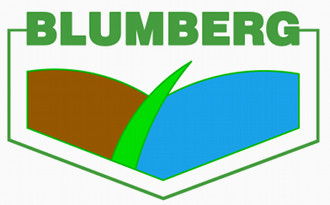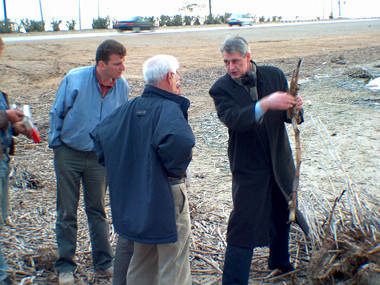Frequently Asked QuestionsA detailed list of FAQ's about
our ecotechnologies can be found in the following links:
Question
1:
Can constructed wetlands (CW) be used for waters contaminated by volatile organic compounds? Answer to 1: Yes, they can. In a pilot scale horizontal subsurface flow constructed wetland (CW) in Bitterfeld, Germany, both low-chlorinated hydrocarbons (monochlorobenzene) and high-chlorinated hydrocarbons (perchloroethylene) could be removed by CW. The removal rate for monochlorobenzene can reach up to 208 mg m -2 d -1, with the inflow load of 299 mg m -2 d -1. Perchloroethylene could completely be removed (>99%) with the inflow load of 49 mg m -2 d -1 (Chen et al., 2012a). On the other pilot scale plant in Leuna, Germany, both benzene and MTBE (methyl tert-butyl ether) could be removed by different CWs. The inflow load of benzene and MTBE has been 188–522 and 31–90 mg d−1 m−2, respectively. Higher removal efficiencies were obtained during summer. The benzene removal efficiencies were 24–100% and 22–100% in the horizontal subsurface flow constructed wetland and the floating plant root mat, respectively; the MTBE removal efficiencies amounted to 16–93% and 8–93% in the horizontal subsurface flow constructed wetland and the floating plant root mat, respectively. The volatilisation rates in the floating plant root mat amounted to 7.24 and 2.32 mg d−1 m−2 for benzene and MTBE, which is equivalent to 3.0% and 15.2% of the total removal. The volatilisation rates in the horizontal subsurface flow constructed wetland reached 2.59 and 1.07 mg d−1 m−2, corresponding to 1.1% and 6.1% of the total removal of benzene and MTBE, respectively. The results indicate that floating plant root mats are an interesting option for the treatment of waters polluted with benzene and MTBE under moderate temperature conditions (Chen et al., 2012b). References: Zhongbing Chen, Shubiao Wu, Mareike Braeckevelt, Heidrun Paschke, Matthias Kästner, Heinz Köser, Peter Kuschk. Effect of vegetation in pilot-scale horizontal subsurface flow constructed wetlands treating sulphate rich groundwater contaminated with low and high chlorinated hydrocarbons. Chemosphere, 89 (2012a), 724-731. Zhongbing Chen, Peter Kuschk, Nils Reiche, Helko Borsdorf, Matthias Kästner, Heinz Köser. Comparative evaluation of pilot scale horizontal subsurface-flow constructed wetlands and plant root mats for treating groundwater contaminated with benzene and MTBE. Journal of Hazardous Materials, (2012b), 510-515. |
Blumberg Engineers in Germany: Since 2003 we realize constructed wetlands with our Chinese partner companies:  Suzhou DeHua Eco Tech Ltd. Room 401 - 402 HaiShangYiPin No. 110 JiuHua Road Suzhou Industrial Park 215027 P.R. China www.dehua-eco.com »  |






